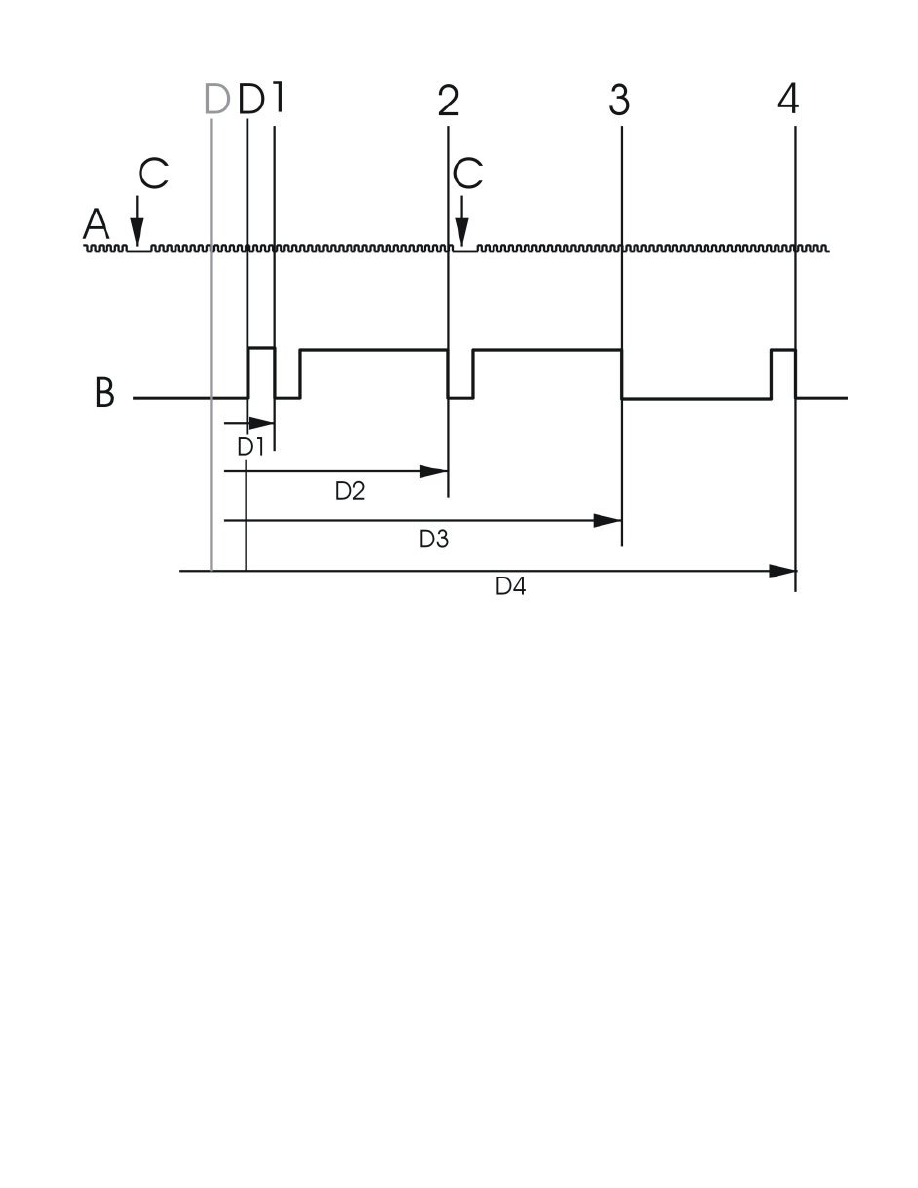V50 AWD L5-2.5L Turbo VIN 68 B5254T3 (2005)

When deploying the camshaft by for example 10°CA (the engine control module (ECM) deploys the camshaft), the detection of the camshaft flanks will
be offset by 10°CA from the reference positions for the crankshaft.
The illustration shows how the signals relate to each other when the camshaft is controlled (deployed camshaft), D1 - D4 is reduced.
The engine control module (ECM) is then able to calculate the °CA (crankshaft degrees from top dead center (TDC)) that the intake valve opens and the
exhaust valve closes for each cylinder. This is because the opening and closing angles are fixed and predefined in relation to the flanks on the camshaft
rotor.
The closing angle of the intake valve and the opening angle of the exhaust valve can be read in VIDA.
The following applies when the camshafts are in their 0 position (no deployment):
-
the opening angle of the intake valve 27°CA
-
the closing angle of the exhaust valve is 26.5°CA.
The following applies when the camshaft is fully deployed:
-
the opening angle of the intake valve is -(minus) 23°CA
-
the closing angle of the intake valve is -(minus) 3.5°CA.
The total of the closing angle of the intake valve - (minus) the opening of the exhaust valve = the valve overlap.
Control, CVVT unit
